The boat steadily chugs along the Chao Phraya River while you cling to the handrail to counteract the rocking and reeling. It noisily shudders along the ancient waterway that acts as the main artery of Bangkok. The sputtering engine wheezes its way through the black water past swimming boys that seem not to care about the hygiene levels of the murky river. The engine cuts and the ferry drifts smoothly towards a jetty. The boat bumps to a halt and convulses momentarily before being moored for your disembarkation. Getting off the boat and into the blazing sunlight of the Bangkok afternoon, a sparkling tower penetrates the sky in a dazzling shimmer. It can be seen for miles, twinkling in the sun. Dedicated to the golden orb that gives it life, the enormous prang (Khmer-style tower) belongs to Wat Arun Ratchawararam Ratchawaramahawihan: The Temple of Dawn.
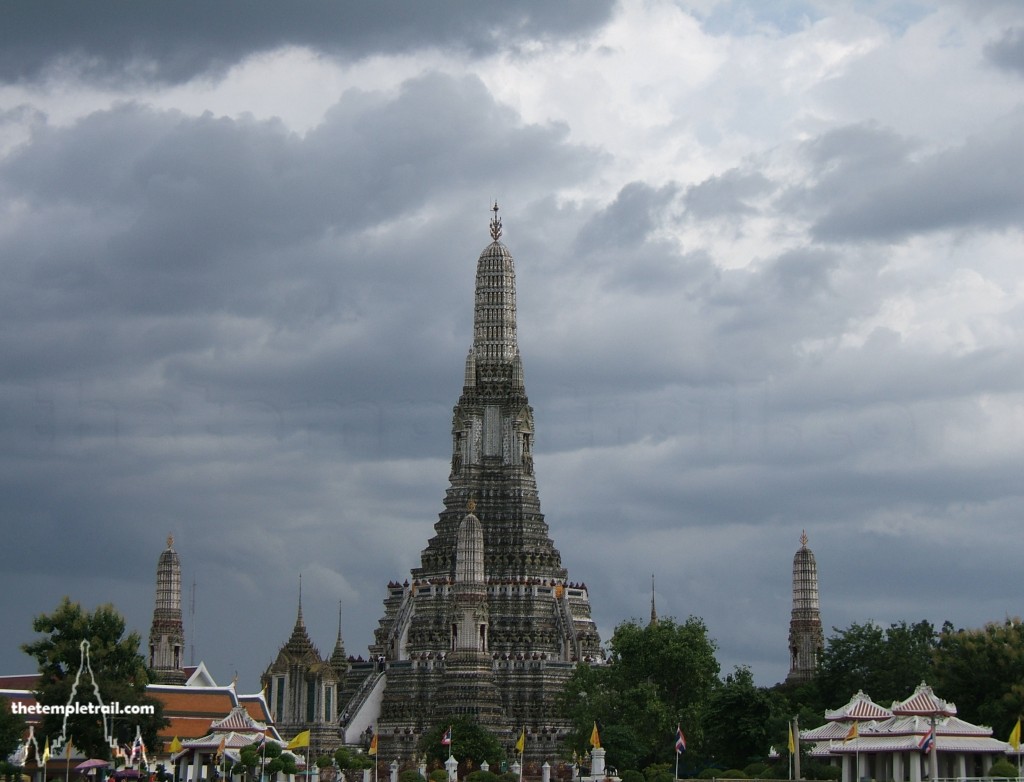
The site that Wat Arun occupies has had a temple on it since the Ayutthaya period of Thai history. Maps from the reign of King Narai in the mid to late 17th century show a temple named Wat Makok Nok located there in the village of Bang Makok in the Thonburi section of the Chao Phraya River. Sailors would have stopped at Bang Makok to resupply and visited the temple to gain safe passage for the rest of their journey. After the fall of Ayutthaya to the Burmese in the late 18th century, a general named Taksin led the resistance movement and, after expelling the Burmese, crowned himself king and founded the new capital in Thonburi.
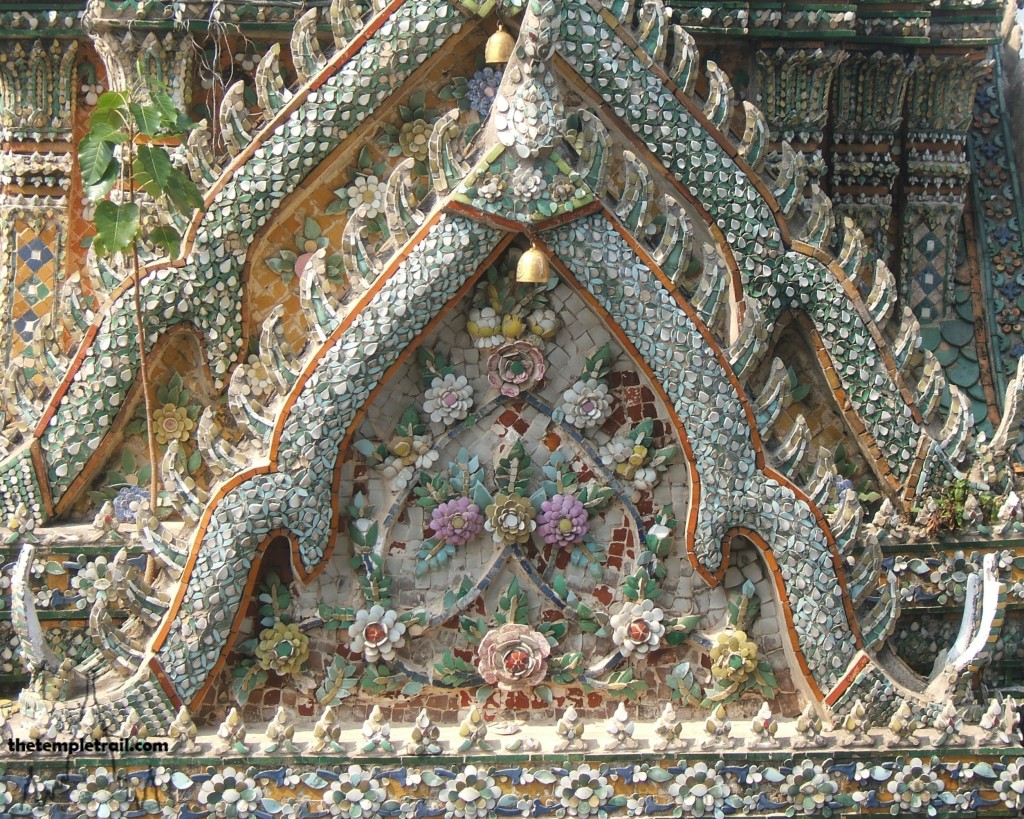
Taksin’s fleet arrived at Wat Makok Nok at dawn and after he paid homage to the relic at the temple, it began to be referred to as Wat Chaeng (Temple of Dawn). King Taksin the Great designated the temple as a royal wat and built the grand palace around it. Taksin had the Emerald Buddha, which had been looted from the Laos capital of Vientiane, installed in the temple during his reign. As Taksin grew increasingly unstable mentally and more religiously fervent, he expelled the monks from the temple and used it as his private chapel. The temple lost its significance when Taksin was deposed and executed by one of his generals Chao Phraya Chakri, who crowned himself as the first king of the current Chakri Dynasty. Rama I, as he was later known, moved both the capital and the Emerald Buddha to the other side of the river to Rattanakosin (Keeping place of the Emerald Buddha) and named the new city Krung Thep. The temple fell into disuse and was abandoned until Rama II undertook renovations to the temple in the 19th century. The current name comes from the Hindu god Aruna, god of the dawn.
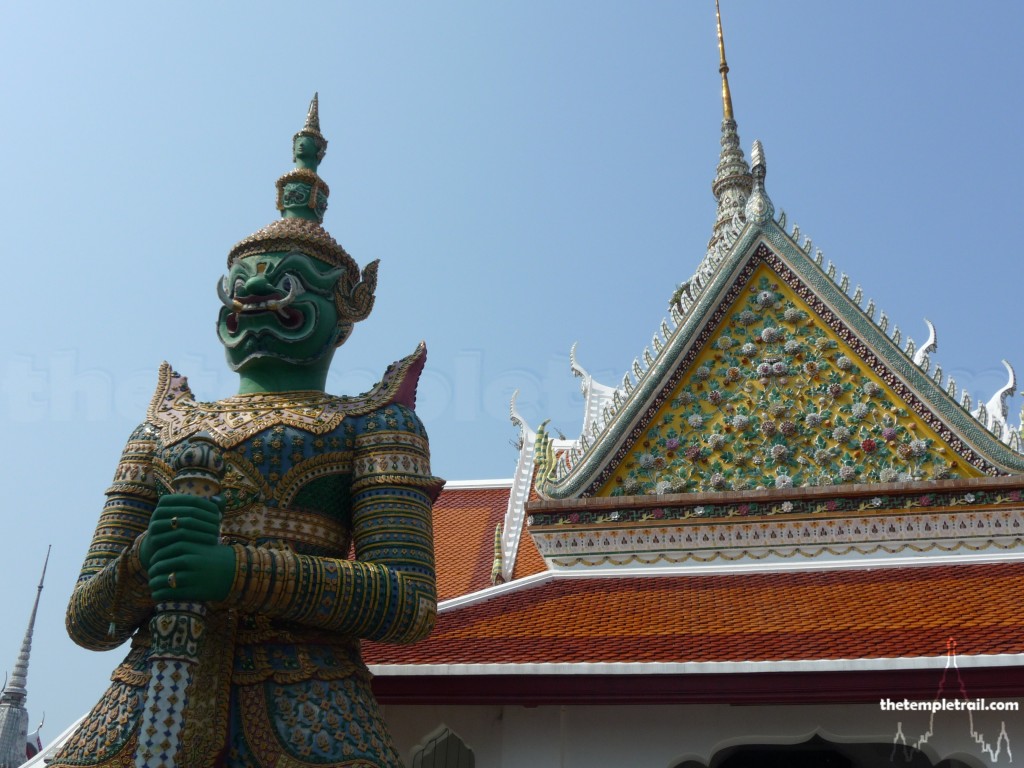
Entering the compound, you pass some riverside salas (pavilions) and head inland towards a spired entrance building guarded by a white and a green Yakṣa (ogre or goblin) called Sahassateja and Tasakantha. The Yakṣa guardians keep a steady gaze on you as you pass through the gateway and into the sanctuary of the Phra Ubosot (ordination hall). In front of you is the magnificent building that was built by Rama II. Like the entrance building, it is decorated with porcelain and it glitters in the sunlight. Crossing the boundary marked by a multitude of small stone pillars topped with Chinese lions, you take off your shoes and enter the shaded hall. Inside, the beautiful intricate murals sing out from the dark recesses, but your eye is drawn to the principle golden Buddha image that is enshrined here. Commissioned by Rama II, the Phraphuttatummisorrajalokkatattdilok is said to have been modelled on the king himself. The beautiful image is not only important in itself as an object of worship, but its base also contains ashes from the cremation of Rama II.
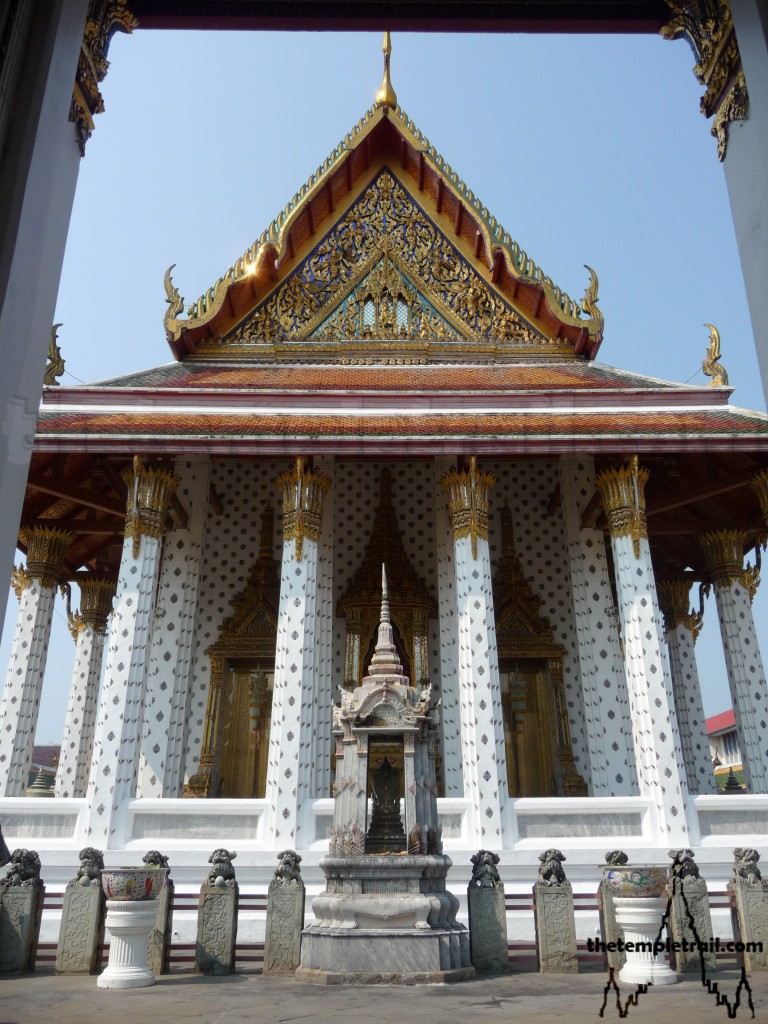
Exiting the hall and taking in the wiharn kot (roofed cloister) that encircles the ubosot, you are surrounded by Chinese statues and Thai Buddha images. Passing through the southern doorway, you immediately face the Buddha Footprint Niche, a mondop (shrine) that houses a Buddha footprint. Around this are four chedis (stupas). To the south of this cluster is the Phra Wiharn (prayer hall) that enshrines the famous Phra Arun Buddha image that, like the Emerald Buddha, was also looted from Vientiane in Laos. These buildings all pale in comparison to the massive structure that sprouts upward into the sky.
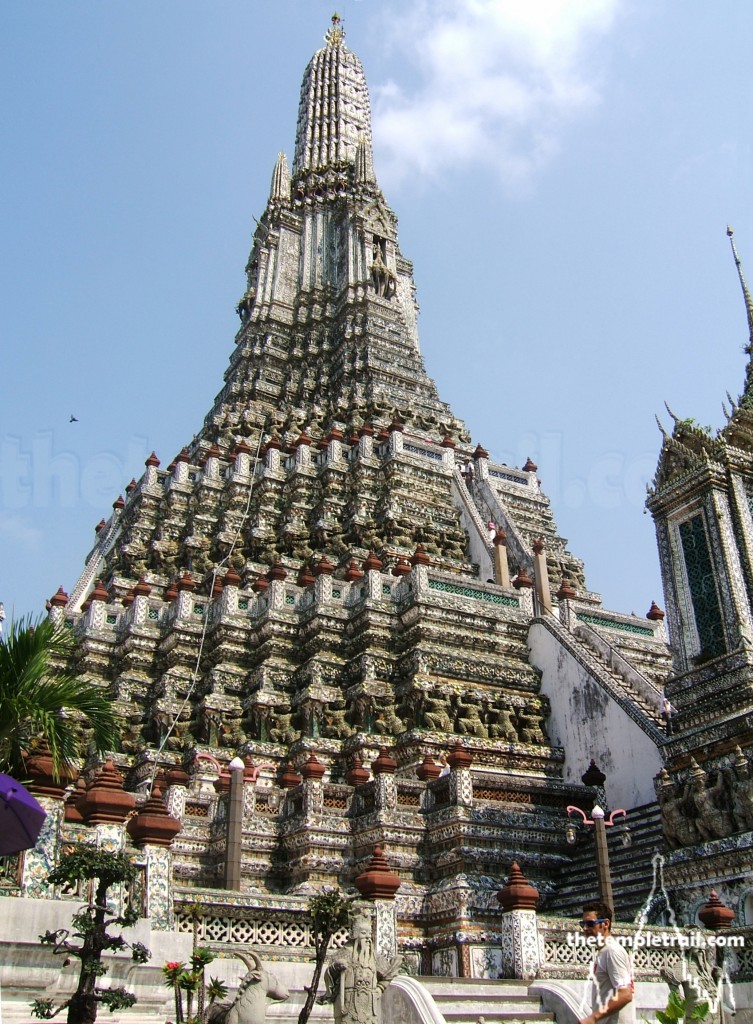
The Phra Prang (main prang) sits on the site of an earlier prang; behind the old wiharn and ubosot. The 64 metre tower is the tallest prang in Thailand and was built during the reigns of Rama II and Rama III. As you approach the glistening spire, the surface comes into focus. The concrete exterior is encrusted with porcelain that came from two sources. Much of it is broken china that was used as ballast in Chinese vessels that came to Bangkok to trade, while the remainder is made up of the famous Thai benjarong ware donated by local people in order to make merit.
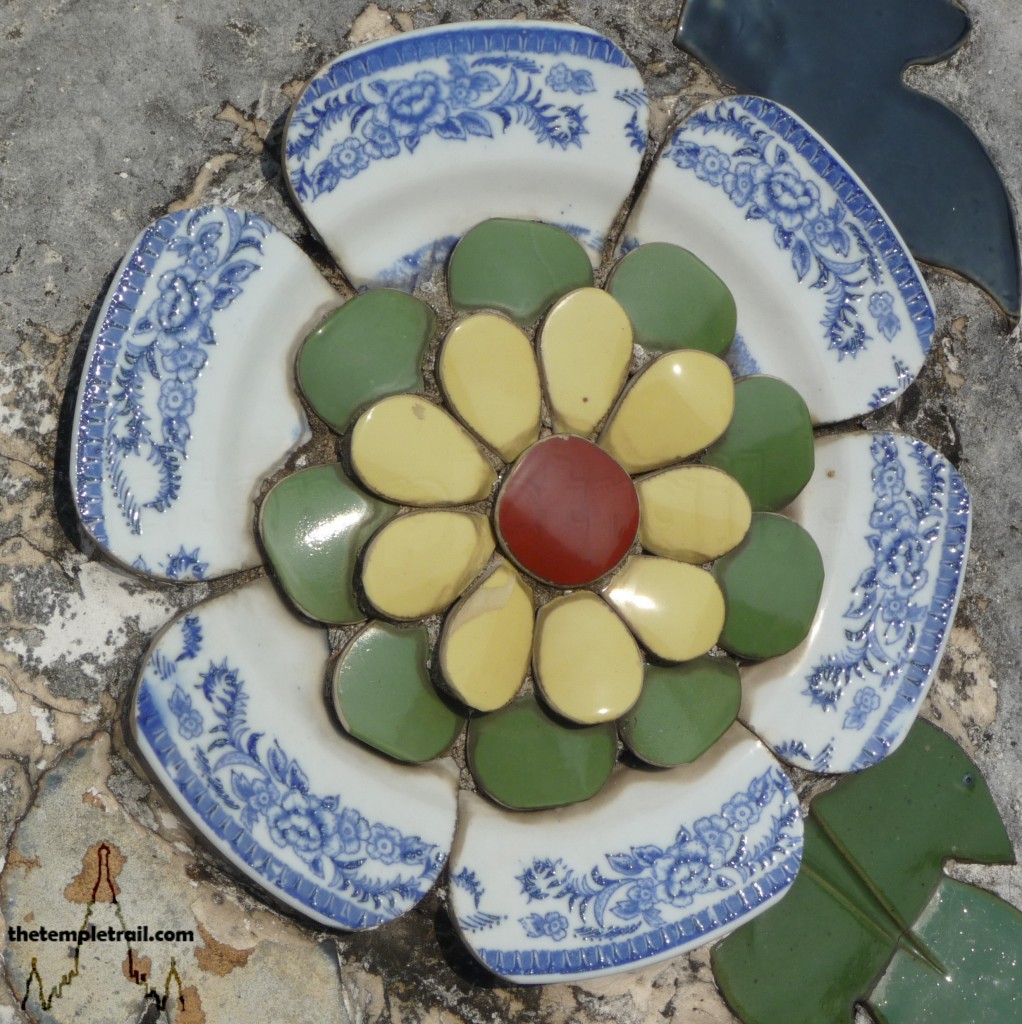
Standing in the presence of the prang, you note that it is part of a bigger picture. On each of the cardinal directions sits a small mondop thit (shrine) and in each of the four corners is a prang thit (satellite prang). The mondops each house imagery of the story of Buddha and are decorated with Kumbhāṇḍa (pot-bellied dwarves) and Gandharvas (heavenly musicians). The prang thit are dedicated to Phra Phai (or Veyu) the wind god who serves under Śakro devānām indraḥ (Śakra or Indra), the king of the devas (gods). Each of the smaller prangs has a statue of Phra Phai on horseback poking out of the niche of the structure. Each of the satellites are decorated with devas and Narasingh or Narasimha (the man-lion avatar of Vishnu).
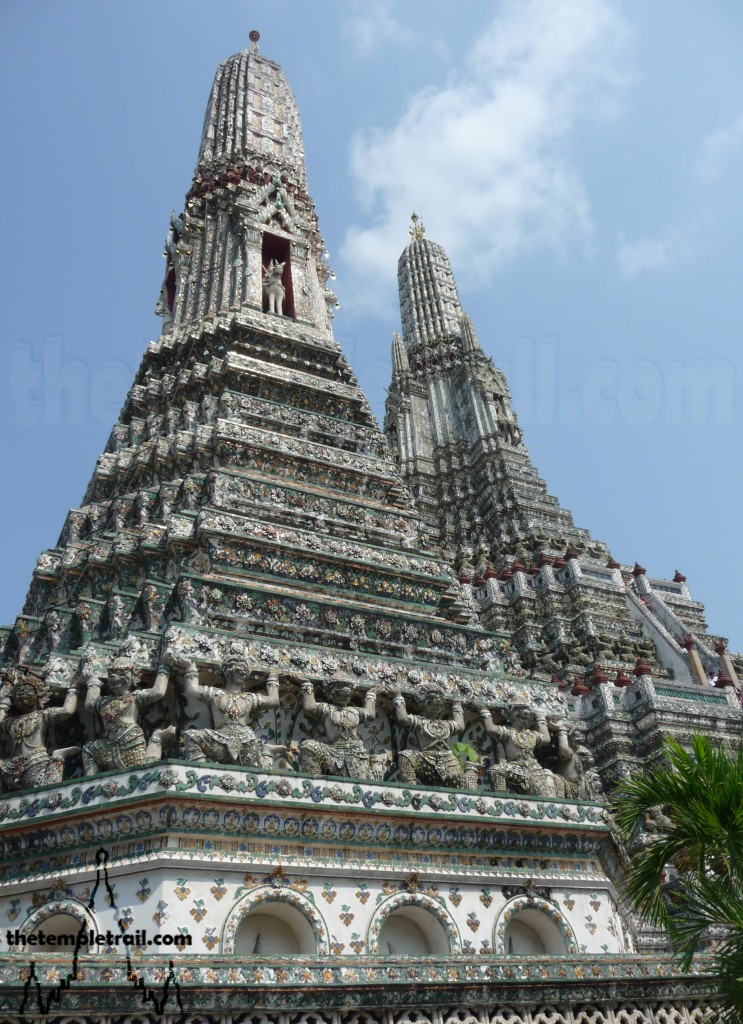
Stepping up to the monolithic Phra Prang, you are in the midst of a huge piece of symbolic narrative. The entire prang site represents the Hindu-Buddhist cosmology of the Triloka or Tridhātu (three realms); the Arūpaloka or Ārūpyadhātu (the formless realm), the Rūpaloka or Rūpadhātu (the form realm), the Kāmaloka or Kāmadhātu (the desire realm). The centrepiece of the Kāmaloka is Mount Meru as personified by the Phra Prang. The subjects of all of the worlds within this realm, including its gods, are subject to desires and are under the dominion of Māra, a powerful demon and lord of evil. It is within this realm that we humans reside. Sumeru (Mount Meru) is the mountain that the sun and the moon revolve around in the centre of the universe. The mountain is surrounded by lesser peaks, four continents (represented by the prang thit) and a vast, deep ocean called Nathi Si Thandorn. The ocean and the foot of the mountain are home to the Asuras (angry gods) who fell from the peak of the mountain. At the base of the mountain is the Pa Himaphan (Himmavanta forest) that is inhabited by a whole array of wondrous creatures that are part of Thai folklore. Higher on the slopes of the mountain is the world of Cāturmahārājikakāyika or Cātummahārājika, the abode of the Four Great Kings and their retinues. The kings and their armies of Kumbhāṇḍa, Gandharvas, Yakṣas and Nāgas (great water serpents) protect the higher realm from the Asuras of the lower realm. The peak of the mountain is the world of Trāyastriṃśa or Tāvatiṃsa. This is where the devas (gods) and apsaras (nymphs) live and are ruled by Śakra.
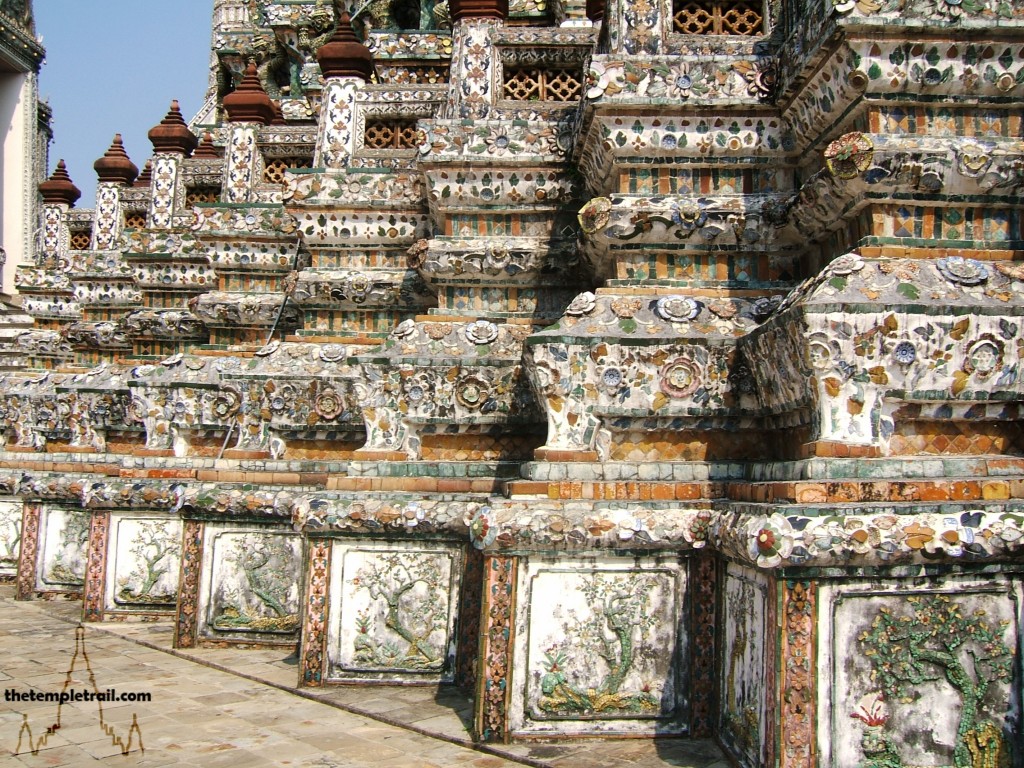
You walk toward the set of prangs and before you ascend onto the Tan Phai Tee (square base), you must pass Chinese guardian statues that stand watch at the entrances. Threading yourself between a mondop thit and a prang thit, you climb the short staircase and onto to the plaza-like platform that represents the ocean surrounding Sumeru. You approach the Phra Prang and notice that its base is decorated with tree motifs and floral designs and populated by kinaree (half-bird ladies). This is symbolic of the Pa Himaphan. Ascending the stairs beside a mondop that climb the first level, you begin your journey upwards through the different realms. On the first taksin (terrace) you are greeted by a row of 64 Marn Bak (demons). They grimace at you as you enter their world and look out onto the Bangkok skyline. Climbing yet higher, up a more precarious staircase to the second taksin, you are now confronted by the enemies of the Marn Bak; 46 Krabi Bak (monkey deities). In the Thai classic Ramakien, the monkeys fought a war against the demons to assist Phra Ram (Rama) to recover Nang Sida from the demon king Thotsakan. Once more tackling an even steeper flight of steps, you are finally on the final taksin. Here 52 Bramhā Bak (gods of the Rūpaloka) stare out from the prang. Their eyes are dazzling and have the ability to cut to your soul.
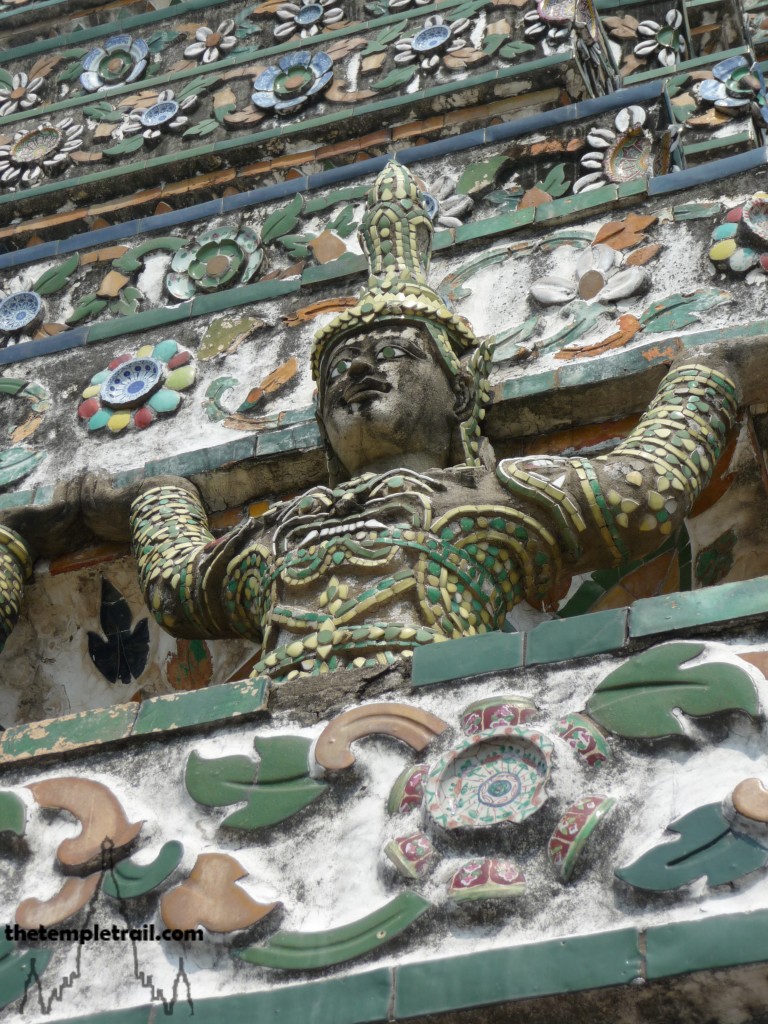
Here at the highest point that you can reach, you look out in the direction the Bramhā Bak are looking. Below you, the Chao Phraya seems like a quiet stream. The buildings of Bangkok look distant and insignificant. You avert your gaze from the city and up the prang to the higher levels that are impossible to access. Above your terrace are four niches that house statues of Śakra on his elephant Erawan (Airavata). The three headed elephant and its holy rider survey the world from their abode in the clouds. Above each of the niches stands a small prang and a row of 16 statues of the Vedic god Narayana (Vishnu) riding on his mount of Garuda (the bird-man and the seal of Thailand). This marks the beginning of the traditional central corn-cob shaped peak of the prang. Straining your eyes to see the pinnacle of the 64 metre structure, your eye is caught by a glimmering object. The golden ornamental peak of the prang, known as the Yod Noppasoon, is crowned with a 185 kilogram mongkut (golden crown). The Yod Noppasoon represents the vajra; the lightning weapon of Śakra.
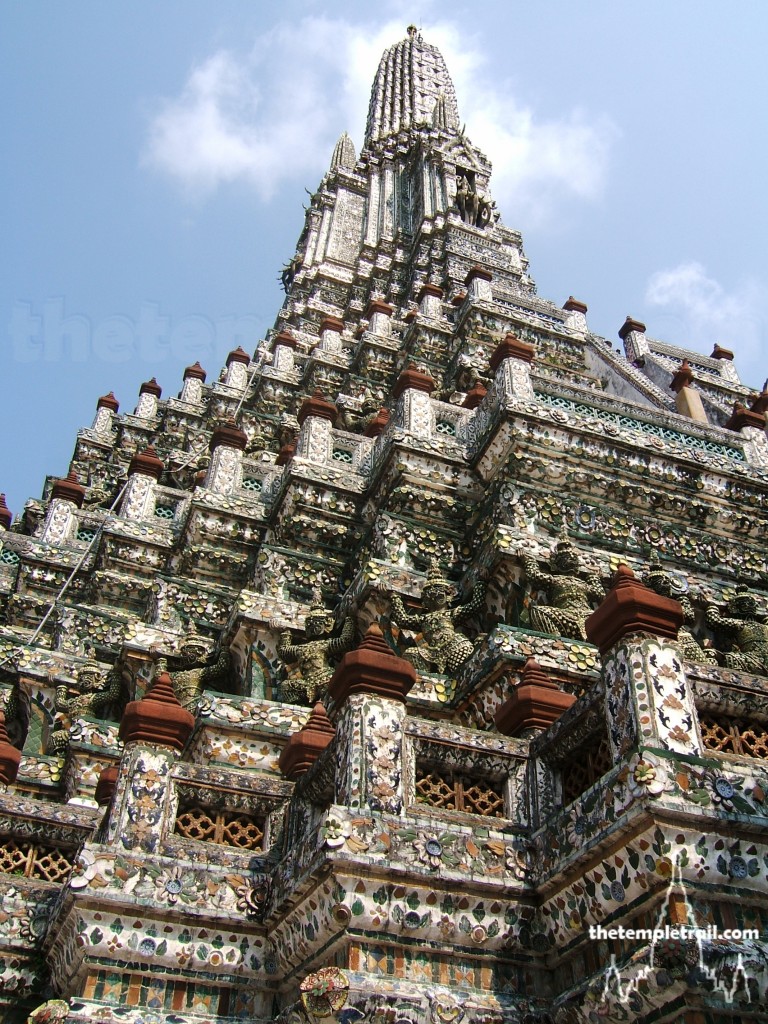
Descending from the heavens, you cross back through the various levels and return to the realm of people. Scanning up the prang, the countless pieces of porcelain catch the light and their colours play with your vision. Turning away and making your way back through the temple grounds, your mind struggles to get to grips with the complex cosmology represented at Wat Arun. Steeped in history and mysticism, there is no other temple like it in Thailand. As you wait for your boat across the river to Wat Po and the Grand Palace of the Chakri Dynasty, you take some time to reflect on how this section of Bangkok was once a brand new capital city in an unstable time of regeneration. You see how this temple is a symbol of fluctuating human power and an emblem of modern Thailand. It is the seed from which Bangkok has grown.
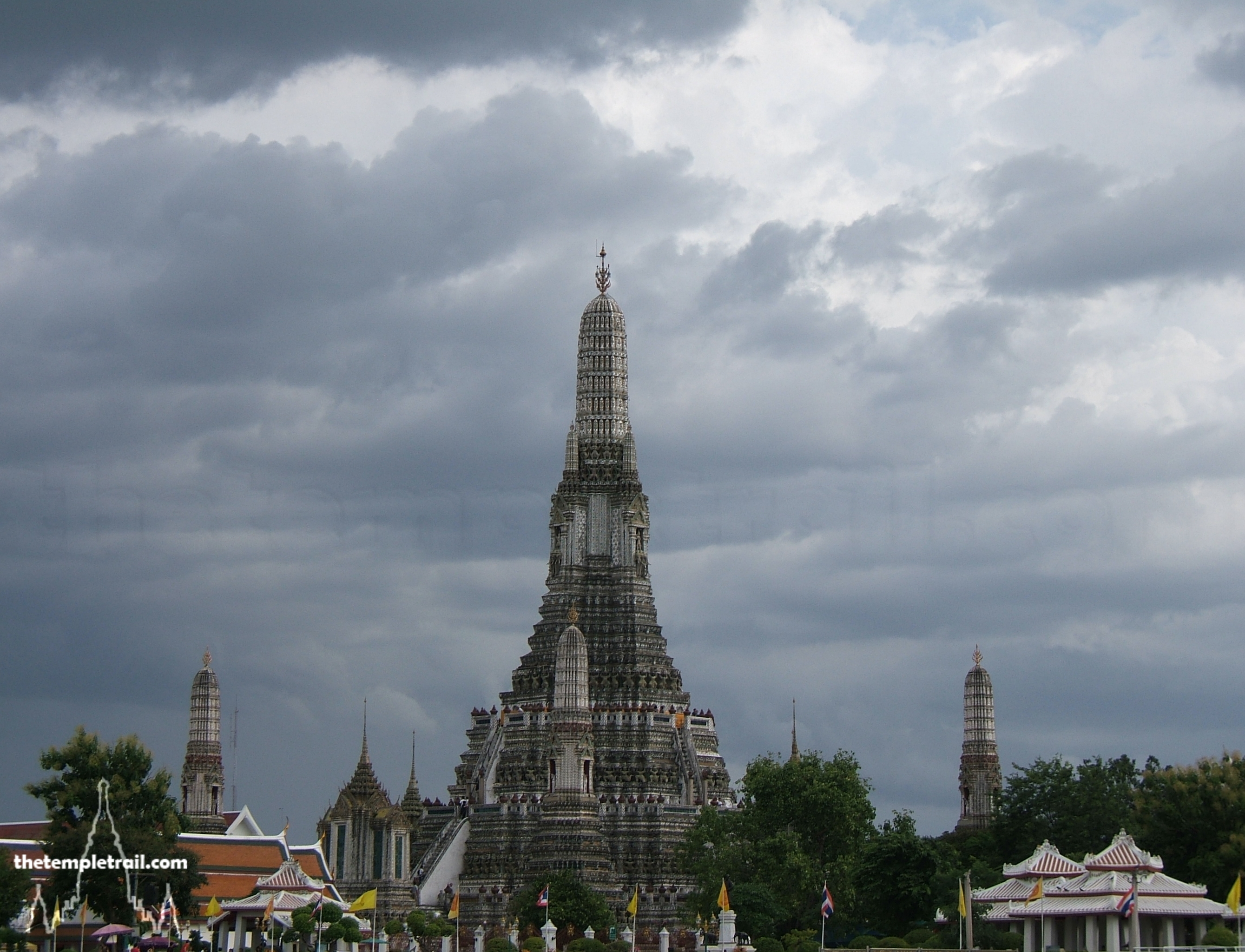
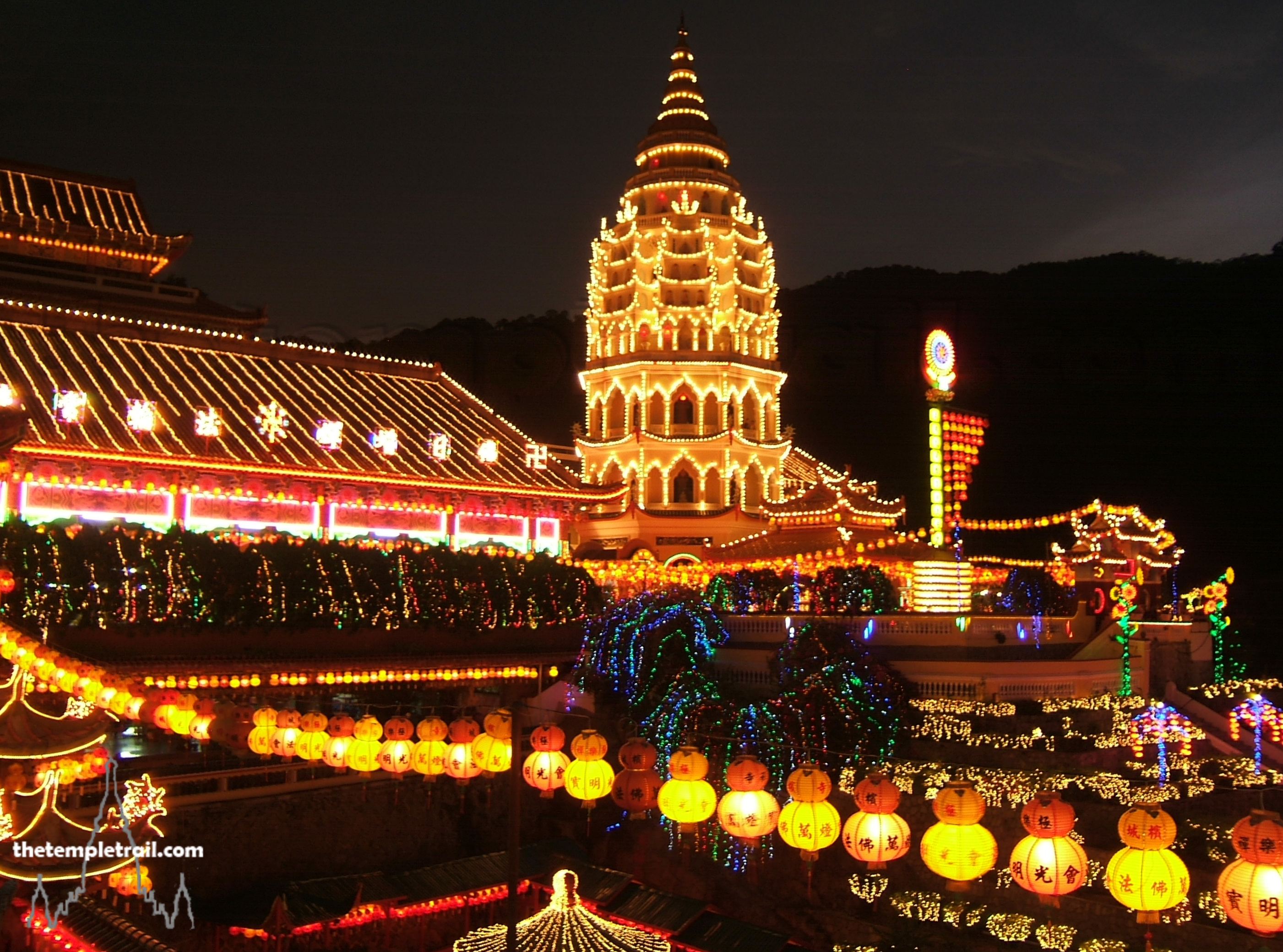 Kek Lok Si
Kek Lok Si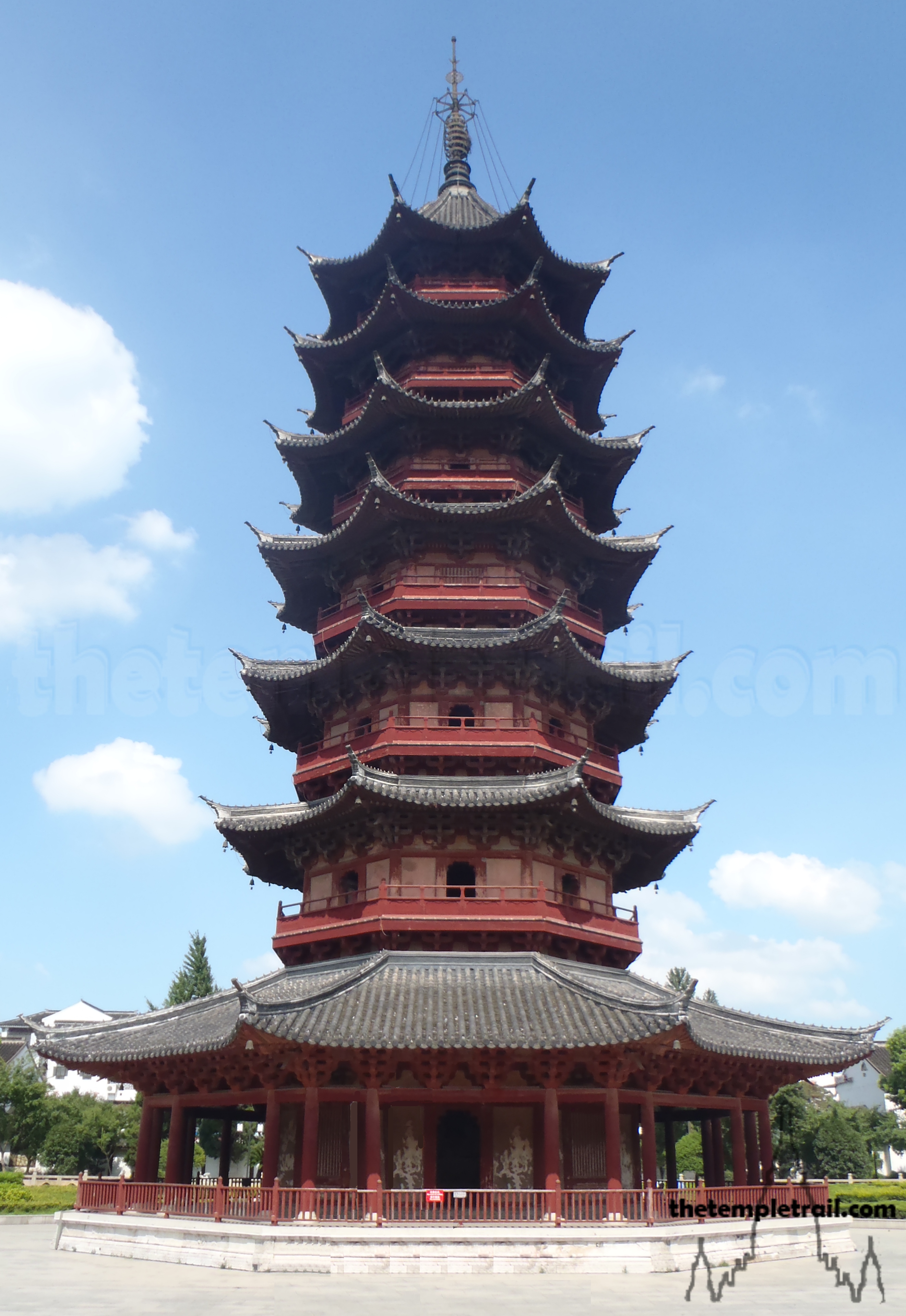
[…] informacji na temat symboliki w Wat Arun czerpałam z tej strony. Przeczytacie tutaj ogrom szczegółów na temat każdego malutkiego detalu tej świątyni – […]